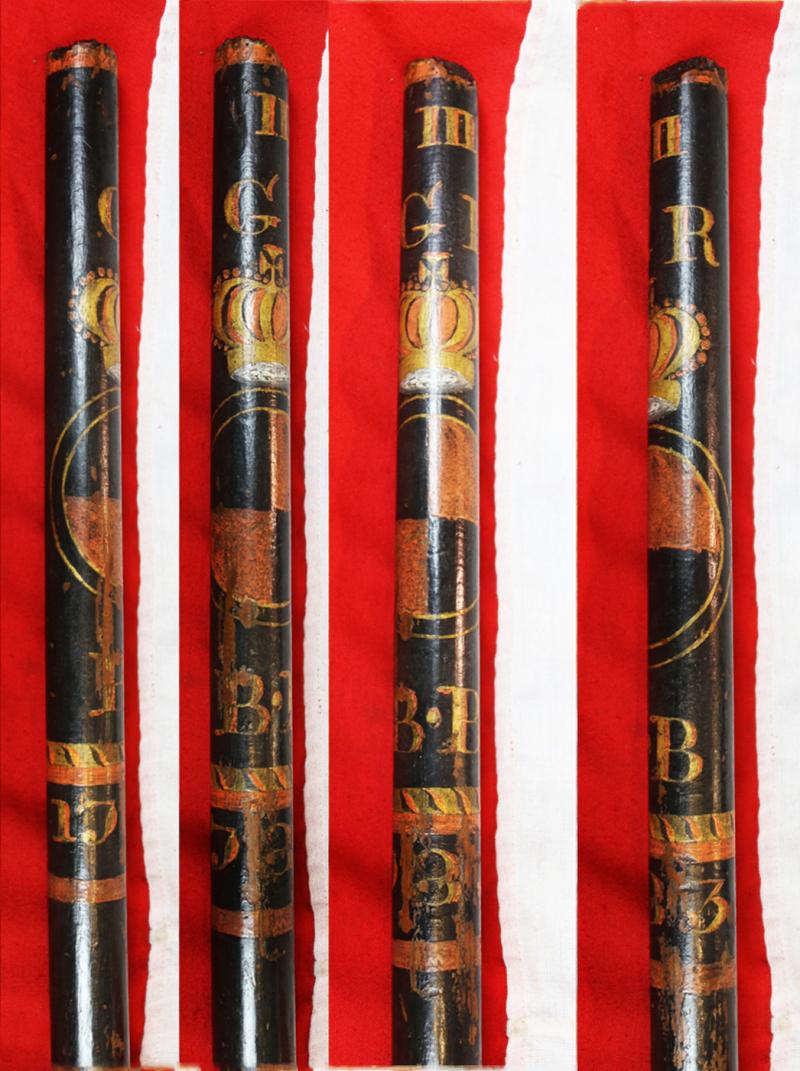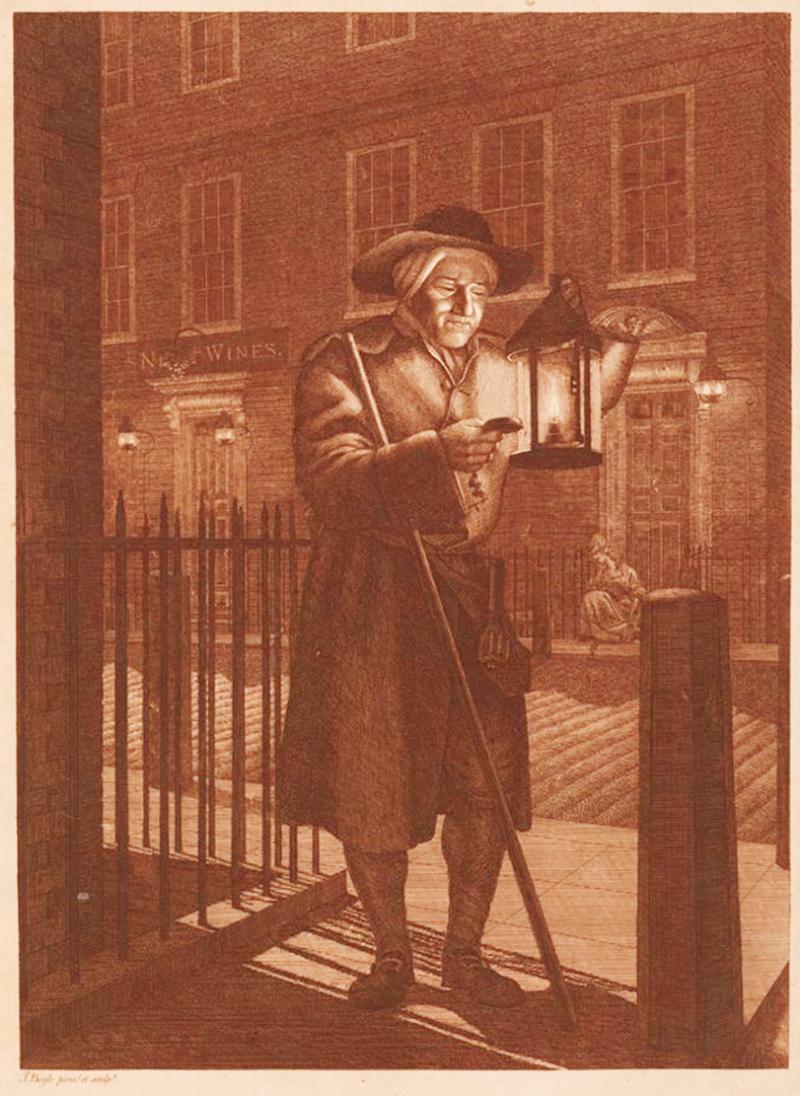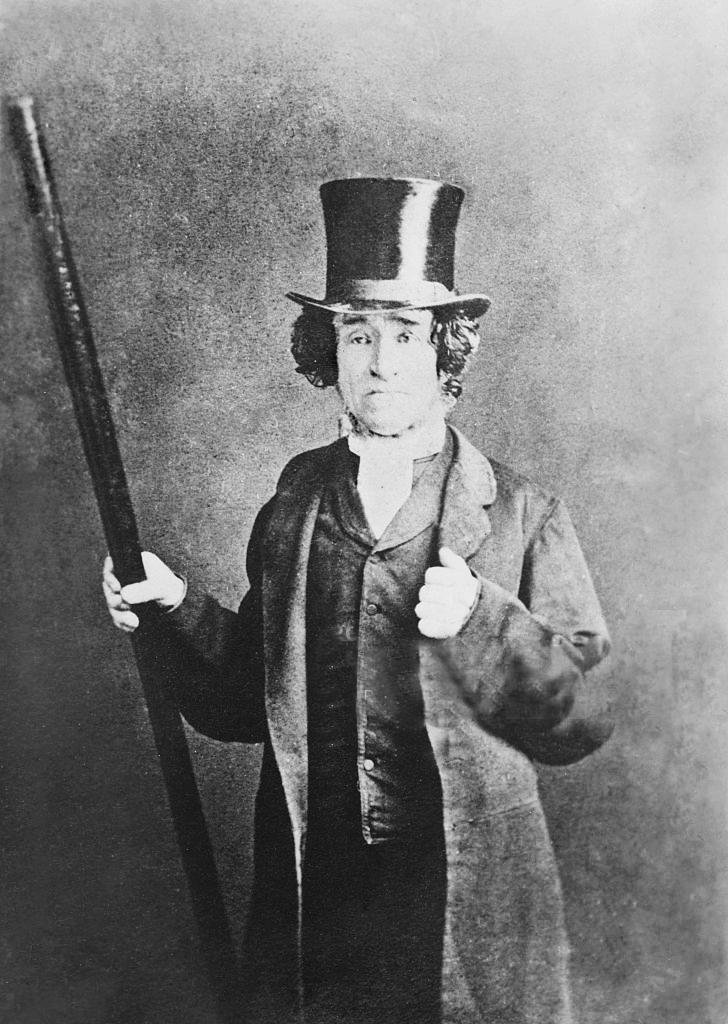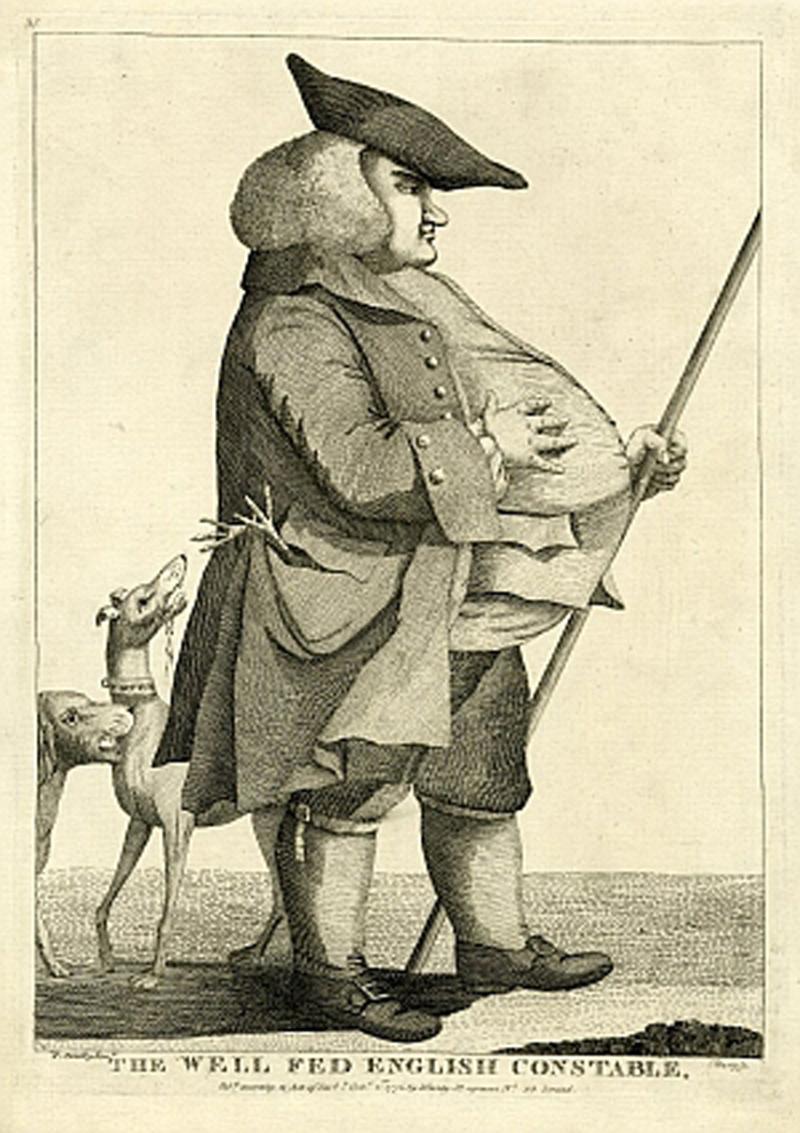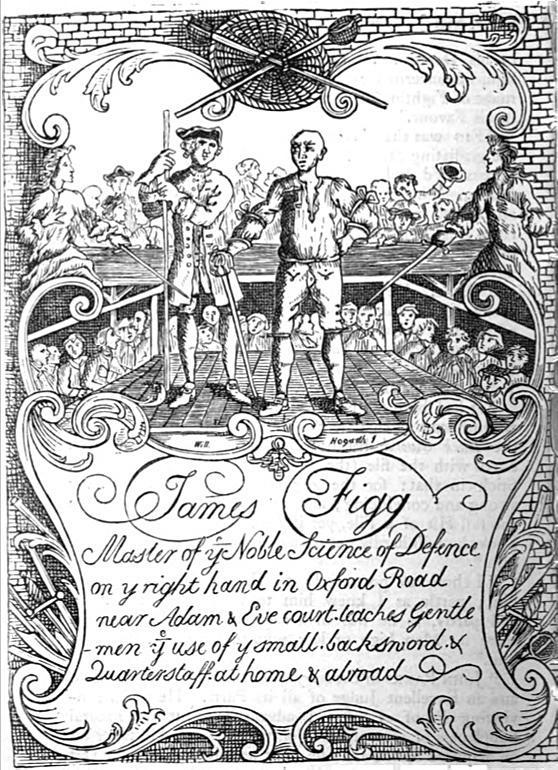Very Rare, Possibly the Oldest Surviving Example in Existence, From The 18th Century, King George IIIrd 'Bow Street Runner's' Thief-Taker's or Beadle's Quarterstaff With Royal Crest From the Century Before the Founding of The Earliest British Police
Bearing the hand painted decoration of a large gilt and coloured crown, and a gilt GR monogram for the monarch, King George IIIrd, a district crest of a quartered circle, and monogram B.B. above the date 1783. This might well be the parish of Bromley-by Bow, now in Tower Hamlets Borough in London, where Bow was located, but this has to be conjecture as we have never seen one as old as this before, in, or out, of a museum collection. The warrant officer's tipstaff is recorded in writing as far back as the 14th century, but no example exists. The parish of Bromley-by-Bow has historic pedigree, appearing in the correspondence of Oliver Cromwell.
As far as we know this may be the oldest surviving law enforcement officer's, staff or trucheon, dated, with the royal crest, certainly in Britain, possibly the world. Incredibly dated from the time of the American Revolutionary War, aka the American War of Independence, when America was a British colony. We can't recall ever seeing even an 18th century crested staff or trucheon in over 50 years. A few years ago one dated 1804 was found, and made a trade magazine headline, as possibly the oldest ever truncheon, and this was made and in service over twenty years before then.
The Bow Street Runners were the law enforcement officers of the Bow Street Magistrates' Court in the City of Westminster. They have been called London's first professional police force. The force originally numbered six men and was founded in 1749 by magistrate Henry Fielding, who was also well known as an author. His assistant, brother, and successor as magistrate, John Fielding, moulded the constables into a professional and effective force. Bow Street Runners was the public's nickname for the officers although the officers did not use the term themselves and considered it derogatory. The group was disbanded in 1839 and its personnel merged with the Metropolitan Police, which had been formed ten years earlier but the London metropolitan detective bureau trace their origins back from there.
Magistrate Henry Fielding decided to regulate, regularise, formalise and legalise the thief-takers' activity due to high rates of corruption and mistaken or malicious arrests, therefore creating the Bow Street Runners. His Runners were not dissimilar to the thief-takers, but differed from them in their formal attachment to the Bow Street magistrates' office and in being paid by the magistrate with funds from central government. They worked out of Fielding's office and court at No. 4 Bow Street, and did not patrol but served writs and arrested offenders on the authority of the magistrates, travelling nationwide to apprehend criminals.
It has a some surface paint wear caused by service use in its working life. Based on the old English quarterstaff a beadle or Bow Street Runner's walking stave that was originally used in the days before a force had been designed for the British service. It was a means of identifying the bearer as to his rank, status and authority as a police constable, yet still a most effective weapon of defence and restraint when required, but they continued in use after uniforms were fully standard, but only for a brief period. Very few of these most unusual original police service artifacts survive today. Stick fighting was prevalent throughout historical European martial arts and indeed worldwide. The oldest systematic descriptions of stick-fighting methods in Europe date to the 15th century. The oldest surviving English work giving technical information on staff combat dates from the 15th century - it is a brief listing of "strokes of the 2-hand staff", which shares terminology with the preceding "strokes of the 2-hand sword" in the same manuscript. George Silver (1599) explains techniques of short staff combat, and states that the use of other polearms and the two-handed sword are based on the same method. Later authors on the subject included Joseph Swetnam, Zachary Wylde, and Donald McBane. Silver, Swetnam, and Wylde all agreed that the staff was among the best, if not the very best, of all hand weapons.
During the 16th century quarterstaves were favoured as weapons by the London Masters of Defence. Richard Peeke, in 1625, and Zachary Wylde, in 1711, refer to the quarterstaff as a national English weapon. By the 18th century the weapon became popularly associated with gladiatorial prize playing. A modified version of quarterstaff fencing, employing bamboo or ash staves and protective equipment adapted from fencing, boxing and cricket was revived as a sport in some London fencing schools and at the Aldershot Military Training School during the later 19th century. Works on this style were published by Thomas McCarthy and by Allanson-Winn and Phillips-Wolley. A superb photo in the gallery of an early 19th century city Beadle with his near identical quarter staff.
68 inches long, in very good condition. The very top and bottom 1/2 inch has traces of old extinct worm.
Ref; picture in the gallery https://collections.britishart.yale.edu/catalog/tms:2605.
Free for all, public domain
UK mainland regular delivery only due to length, export delivery by request
Code: 25761
1250.00 GBP


